民间自发创建的博物馆。本项目获得新加坡国家文物局的认同与支持。文物馆于2016年筹建,2018年6月3日上午9时由陈振声部长开幕。
文物馆开放时间:每天上午9.30时至下午4时。公共假期上午9.30时至下午1时。我们提供华英粤语导览,请预约。
A museum set up by Peck San Theng. The museum was initiated in 2016. Minister Chan Chun Sing officiated the opening ceremony on 3 June 2018.
Opening hours: 9.30am to 4pm daily. 9.30am to 1pm on public holidays. Guided tours are provided in Mandarin, English and Cantonese. Please let us know in advance if you need our guided tour services.

由广惠肇嘉丰永大七属人士出资兴建的海唇福德祠早在1824年已经立庙。那里俗称源顺街,也就是直落亚逸街。庙宇让异乡人寻求神灵慰藉,也是各籍贯人士的核心组织。
广惠肇嘉丰永大指的是广州、惠州、肇庆、嘉应、丰顺、永定、大浦。
Fuk Tak Chi temple was built in 1824 by the Cantonese and Hakka communities from the seven prefectures of Guangzhou , Huizhou, Zhaoqing, Jiaying, Fengshun, Yongding and Dapu.
Like other temples in Singapore, Fuk Tak Chi temple was not only a place of worship but also served as the headquarters of the Cantonese and Hakka communities.

随着南来垦荒的广客人士越来越多,客死异乡的人数跟着增加。广客人士进一步合作,开拓安祥山下(麦士威路)为青山亭坟场。
图中的“Chinese Burying Ground”为青山亭原址,1820年代已经开辟为广客坟场。
As the number of Cantonese and Hakka people living in Singapore increased, so too the demand for funeral services. Both communities collaborated to establish the Cheng San Teng cemetery around Maxwell Road.
The ‘Chinese Burying Ground’ indicated on the map was Cheng San Teng cemetery. It was established in the 1820s.
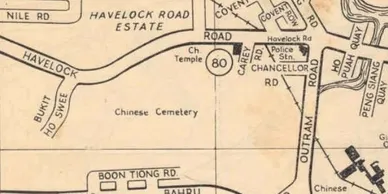
青山亭无法应付需求, 1840年政府批准在河水山的23英亩地段设立绿野亭坟山。
1954年新加坡第一份街道图上的合洛路与欧南路交界处,“Chinese Cemetery”就是“绿野亭”。
After more than 10 years, the Cheng San Theng cemetery could no longer meet demand. In 1840, the colonial government approved the establishment of the 23-acre Loke Yah Teng cemetery in Bukit Ho Swee.
The first edition of Singapore Street Directory in 1954 shows that the Loke Yah Teng cemetery (Chinese Cemetery) located at the junction of Havelock Road and Outram Road.

三十年间绿野亭也满额了。丰永大三属于1882年在荷兰路设立丰永大义山,嘉应人士于1887年在荷兰路设立双龙山,广惠肇三属则于1870年由梅南瑞发起,在汤申路开辟碧山亭。
Within 30 years, Loke Yah Teng cemetery had reached its full capacity. The Fong Yun Thai and Jiaying communities established their respective cemeteries near Holland Road. The Kwong Wai Siew community, led by Boey Nam Sooi, established the Peck San Theng cemetery at Thomson Road in 1870.

殖民地政府收购青山亭地段后,广惠肇人士在原址兴建了新亚旅店与天一景大厦,租金用来支持养正学校与广惠肇留医院的运作。
Following the acquisition of Cheng San Teng cemetery by the colonial government, the Kwong Wai Siew community built the New Asia Hotel and Air View Hotel on its former site. The rental income was used to support Yeung Ching School and Kwong Wai Shiu Hospital. Today these organisations still receive such funding.
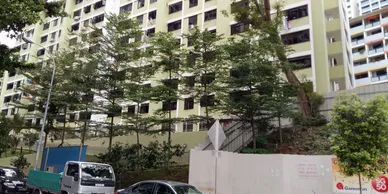
绿野亭坟场原址为现在的河水山,1957年开始清坟起骸。政府在原地兴建了河水山住宅区。
Following the clearing of Loke Yah Teng cemetery in 1957, the government redeveloped the area into Bukit Ho Swee residential estate.

战后的碧山亭发展至324英亩地,等于三分之二个碧山镇。碧山亭坟场以路亭为界,共12个亭(第一至第十亭,新五亭,新七亭)。
In the 1970s, the 324-acre Peck San Theng cemetery could still be seen along Thomson Road. The land area was equivalent to over 180 football fields, covering about two-thirds of today’s Bishan Town. The burial grounds were demarcated by 12 pavilions.

甘榜山亭位于坟场旁,对面是汤申路圣德兰疗养院(St. Theresa’s Home)。甘榜山亭有商店、学校、戏台和民居耕地。
Kampong San Teng was a self-sufficient community living beside the cemetery located just across the St. Theresa’s Home at Thomson Road. A braised duck shop, soy sauce factory, pharmacy, confectionery, school, opera stage and residences could be found on both sides of the road.
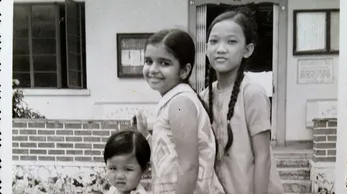
甘榜山亭第一至第三亭的居民多数是广东人,第四至第七亭则潮州人与福建人参半,第八亭为福建人居多。居民也有少数印度同胞。
The residents of Kampong San Teng led a humble livelihood. Most of the residents living at Pavilion 1 to 3 were Cantonese, while those living at Pavilion 4 to 7 were a mix of Teochew and Hokkien, and those living at Pavilion 8 were mostly Hokkien. A few Indian families were living in the kampong as well.
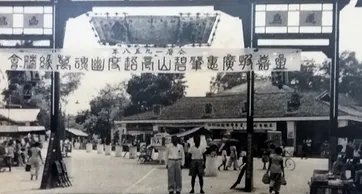
碧山茶亭是甘榜山亭居民的情感联络站。 当时年轻人进电子厂或是到军港工作,老人家和妇女则在家里养猪、养鸡、种菜。平时大家就在茶亭附近活动。
Peck San Tea Pavilion (coffee shop) was the meeting points for most of the kampong residents. Young people worked at the nearby electronic factories, Sembawang Naval Base and Sembawang shipyard. The elderly and women raised pigs and chickens and grew vegetables at home.

碧山亭学校于1936年开始为村民服务。随着甘榜山亭居民搬迁,学校于1981年送走最后一批毕业生。
Kwong Wai Shiu Peck Shan Ting School was established for Kampong San Teng and nearby villagers. The school operated for 45 years before closing down in 1981.

碧山的变迁就是一部本地华社的发展史,成为新加坡历史上不可磨灭的足迹。死人让出土地是为了让更多后人活下去,十万座墓碑林立的坟地演变为今日的三分之二个碧山组屋区。
Bishan is a reflection of Chinese progression in local history. Clan associations, together with temples, are products of early Chinese migration. Collectively, they preserve the rich Chinese history and culture in Singapore for the past 200 years.
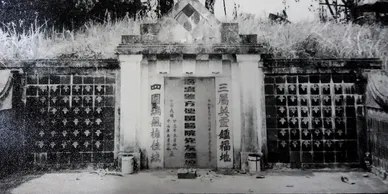
1923年以前,碧山亭已经拨款作为留医院义塚的用途。1930年,碧山亭将第二亭的橡胶园开辟为广惠肇留医院往生者的义塚。
Prior to 1923, Peck San Theng had already collaborated with Kwong Wai Shiu Hospital to bury the deceased patients.
In 1930, Peck San Theng acceded to Kwong Wai Shiu Hospital’s request to set up a community burial ground for deceased patients at Pavilion 2.
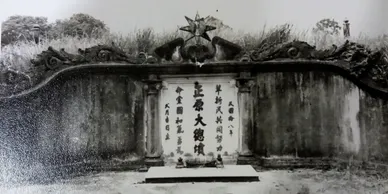
第七亭的正原大总坟墓碑立碑年份为1929年。这个公塚与清末四大寇之一的尢列息息相关。由于尢列祖籍广东顺德,应是征得广东人同意,在碧山亭坟山建立团结党员的公塚。
The Zhengyuan main tomb, rebuilt in 1929, was located at Pavilion 7 of Peck San Theng cemetery. It is a historical reflection of Singaporean Chinese’s participation in the Xinhai Revolution, founding of the Republic and the reunification of China.
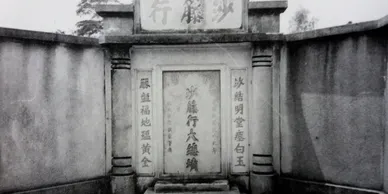
早年从事藤加工业的人士多数来自广东南海,1910年成立了沙藤行。2011年,沙藤行步入历史,将售卖会所的收益和剩余的活动基金捐赠给六家慈善机构。
The Association was established in 1910 for workers of the Rattan industry, most of whom were from Nanhai, Guangdong Province. The association was dissolved in 2011 after crossing its century mark. The remaining fund was donated to charitable organisations.
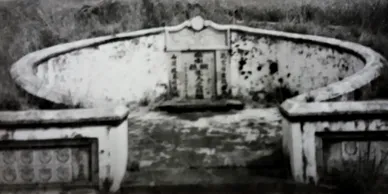
“负阴抱阳”式的墓碑较常为广东人所采用,墓碑连着墓肩向外伸展,然后又转向内,像新月一样。这种风格符合老子的“万物负阴而抱阳”。
The “yin yang” style of tombstone is more commonly used by Cantonese people. Such gravestones stretch outward along with the graves, and then turn inward, like the new moon. This style is in line with Lao Tzu, “all things leave behind them the obscurity (out of which they have come), and go forward to embrace the brightness (into which they have emerged), while they are harmonised by the breath of vacancy.”
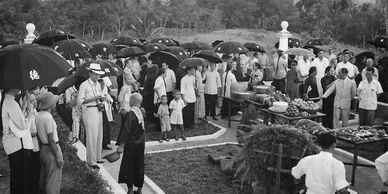
上世纪五十年代,顺德会馆在广惠肇碧山亭购置总坟,开光祭祖时,许多梳着长辫子或整齐发髻的妈姐都积极参与。妈姐又称自梳女,自梳不嫁,孤独一生。这是珠三角特有的文化,尤以顺德为甚。
In 1950s, Shun Tuk Community Guild acquired a plot of burial ground at Peck San Theng. Many majies (self-combed women) participated the ceremony.
In the past, “self-combing” was a unique form of female celibacy in the Pearl River Delta. Shunde women made up the bulk of them. Self-combed women took an oath to remain single, and to avoid any form of sexual activity for the rest of their lives.

碧山亭有90个地缘性(会馆、同乡会)、30个业缘性、140个姓氏宗亲的社群总坟。
社群共祖的含义:生,事之以礼,死,葬之以礼,祭之以礼。
Peck San Theng has 90 locality-based associations (such as clan associations and community guilds), 30 trade-based associations (such as trade-specific groups and charitable organisations) and 140 kinship-based associations (organised by surname).
This is in keeping with traditional Chinese wisdom: When alive, serve with propriety. When dead, bury with propriety and worship with propriety.

发起购置碧山坟地,安葬“聚萍踪于石叻,有人时运不济,命途多舛,在异地溘然长逝”的同乡人。当时的华社领导人除了在新加坡行善外,影响力往往扩及海峡殖民地,例如同治元年(1861年)槟城广福宫重建,梅南瑞也是捐款人之一。
Boey Nam Sooi initiated the establishment of Peck San Theng cemetery to bury those fellow clansmen who failed to return home. In those days, Chinese community leaders were known for supporting charitable causes in Singapore and the Straits Settlements. In 1861, Boey donated to the rebuilding of Kong Hock Keong temple in Penang.
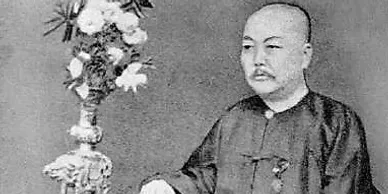
购置碧山亭的时候,胡亚基通过个人影响力,向殖民地政府“求免地税”。胡亚基在广东社稷里是位德高望重的人物,受委为太平局绅,协助殖民地政府调解帮会纠纷。他同时出任中国驻新加坡第一任领事、日本驻新加坡领事和俄国驻新加坡领事,“三国领事”传为一时佳话。创建碧山亭前,胡亚基联合陈嘉云、何亚炎等广客人士负责开辟河水山的绿野亭坟山(1840年)。
Hoo Ah Kay was a well-respected person in the Cantonese community. Hoo used his personal influence during the land purchase for Peck San Theng cemetery to obtain a land tax exemption from the colonial government. He was appointed as a Justice of the Peace and assisted the colonial government to settle gang disputes. He also held the positions of Consul-General of China, Japan and Russia. Prior to the establishment of Peck San Theng cemetery, Hoo was involved in the set-up of Loke Yah Teng cemetery in Bukit Ho Swee (1840) with Chen Jiayun and He Yayan.
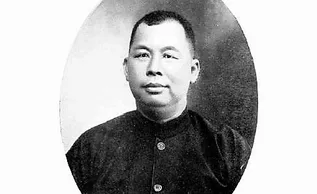
吴胜鹏出任碧山亭总理时发起模范山制度,通过编排列号来划分坟塚,按照号码下葬。吴胜鹏亦推出了由各会馆联合管理坟山,轮流领导,支持开辟第二亭的树胶园为广惠肇留医院义塚。吴胜鹏跟广帮领袖成立海天游艺会,出任陈嘉庚等人成立的山东惨祸筹赈会,多次为赈灾筹款。吴胜鹏担任养正学校总理,联合创办华侨中学,受委为太平局绅、保良局委员、华人参事局委员等。
Ng Sing Phang implemented the model burial system, requiring burial plots to be allocated in sequential order. He introduced the policy of co-management and chairmanship rotation among the clan associations, and supported the setting up of a community burial ground for Kwong Wai Shiu Hospital at Pavilion 2. Ng co-founded the Hoi Thin Amateur Dramatic Association with other Cantonese community leaders, and was a member of the Shandong Relief Fund committee set up by Tan Kah Kee. He was the director of Yeung Ching School and co-founder of the Chinese High School. He was appointed as a Justice of the Peace and a committee member of Poh Leung Kuk (Society for the Protection of Women and Children) and the Chinese Advisory Board.

邱雁宾为倡建万缘胜会的时任碧山亭总理。碧山亭坟山的购置、建设、管理等都需要资金来运作,大型的万缘胜会成为主要的筹集资金的项目。邱雁宾的商场生涯多姿多彩,曾督办海峡轮船公司,合办广益银行,出任利华银行董事等。邱雁宾受委为太平局绅、保良局委员、华人参事局委员等,他也是养正学校和广惠肇留医院的创建人之一。
Yow Ngan Pan oversaw the inaugural Wanyuan shenghui (Salvation Ritual) during his tenure as the chairman of Peck San Theng cemetery. The cemetery required funds to purchase land, build infrastructure and manage its daily operation. Thus, the event became a major fund-raising project. Yow had an illustrious business career, serving as a director of the Straits Steamship Co. Ltd, co-founder of Kwong Yik Bank and a director of Lee Wah Bank. He was appointed as a Justice of the Peace, and a committee member of Poh Leung Kuk and the Chinese Advisory Board. He was also the co-founder of Yeung Ching School and Kwong Wai Shiu Hospital.

新会人士从事粮油杂货与红烟业,在直落亚逸中街设立了广恒、朱广兰、朱有兰、朱富兰、罗奇生、罗致生、同德,形成“中街七家头”。“中街七家头”捐献巨款给碧山亭修庙建路,并积极参与兴建惠及各籍贯人士的同济医院。
Xinhui clansmen were engaged in the trading of tobacco, sundries and soy sauce. They established the companies Kwong Hong, Choo Kong Lan, Choo U Lan, Choo Foo Lan, Loh Kee Seng, Loh Chee Seng and Tung Tuck at Telok Ayer, together forming ‘the seven entrepreneurs of Market Street’. The seven entrepreneurs donated huge amount of money to Peck San Theng cemetery for temple and road repair, and were actively involved in the establishment of Thong Chai Medical Institution.

梅湛轩,亦名梅三、梅亚三。发展碧山亭,建庙开路的“大总理”。梅湛轩于1890年,同陈恭锡、陈若锦、佘连城等人受委为第一届华人参事局委员,在柔佛拥有椒蜜园丘,以及和盛港、瑞和港两个港区,取之社会,用之社会。
Boey Ah Sam, also known as Boey Sam or Zhanxuan, was the chairman who developed Peck San Theng cemetery. Boey, together with Tan Keong Saik, Tan Jiak Kim, Seah Liang Seah and others, was appointed as a member of the Chinese Advisory Board in 1890. He owned a pepper and gambier plantation and two harbours in Batu Pahat, Johor, and contributed generously to the society.
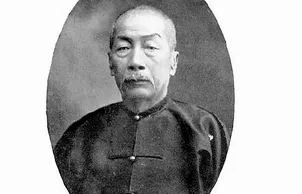
黄亚福是横跨新加坡和新山的慈善家,捐献了新五亭(黄福山)给广惠肇碧山亭,并在黄福山为自己保留墓地。黄亚福也是养正学校和广惠肇留医院的创建人之一,与殖民地政府签下99年的留医院租约,出任第一任广惠肇留医院总理兼主席。
Wong Ah Fook was an active philanthropist in Singapore and Johor Bahru. He donated the New Pavilion 5 (Wong Fook Hill) to Peck San Theng cemetery and reserved a burial plot for himself on Wong Fook Hill. He was the co-founder of Yeung Ching School and Kwong Wai Shiu Hospital, and signed a 99-year lease with the colonial government to acquire the hospital site. Wong served as the hospital’s first president and chairman.
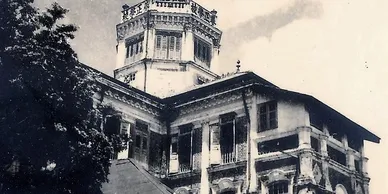
牛车水地区早在1829年已经有广东人私塾。 20世纪初,广东人倡办的“新学”学堂和会馆学校如雨春笋。养正学校为历史最悠久的民办新学学堂。
There were over 300 clan-affiliated and public funded schools in Singapore before the outbreak of World War 2. Yeung Ching School was established in 1905 by the Kwong Wai Siew community.
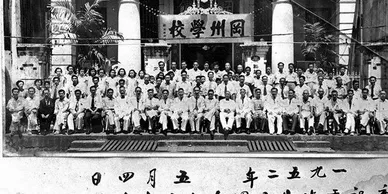
广东人会馆在会馆办学,不过到了1960年代完成了时代使命后,都陆续关闭了。会馆学校有宁阳、东安、冈州、南顺、三水、番禺。
Cantonese clan associations were actively involved in education. After accomplishing their objectives, they were closing down one after another in the 1960s.

1936年9月,在碧山亭大庙内设立的学校,定名为“广惠肇碧山亭义学”,主要为甘榜山亭与顺福村居民提供义学,将前人的善举薪火相传。20年后,碧山亭学校新校舍落成。
Peck Shan Ting School was one of those Chinese schools established in 1936, providing free education for the residence. Funds were raised from Wanyuan Shenghui and donations to support the school.
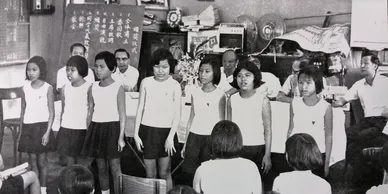
1957年,碧山亭学校成为政府辅助学校,在政府津贴下继续办学。学校于1981年拉下帷幕。碧山亭学校停办的年代,也是新加坡乡村学校和各所华校结束教育使命的年代。
Peck Shan Ting School was incorporated into the national education system after 1957. Like other Chinese public schools, it became a government-aided school. The school eventually closed in 1981 – a period whereby many Chinese schools retired from Singapore’s education scene.
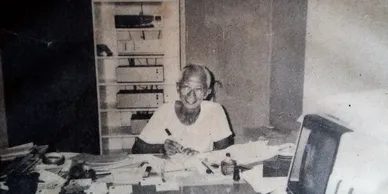
郭明为碧山亭学校第三任,也是最后一任校长。他除了必须自己打字,还驾车送信。遇到杂工请假,必须自己敲钟、扫地、洗厕所。
The last principal of Peck Shan Ting School, Kwok Ming, stated that it was common for the principals of village schools to do everything, including washing the toilet, when there were not enough helpers.
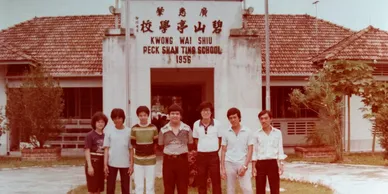
碧山亭学校的“新”校舍于1956年落成,有六间课室,分上下午班上课。学校关闭时,一些校友回校留下纪念照。
The new Peck San Ting School building was completed in 1956. The building had 6 classrooms, divided into morning and afternoon classes. A group of former students visited the school prior to its demolition.

创建碧山亭学校。
Established Peck San Ting School.

捐款筹建南洋大学。
Donated to the Nanyang University Fund.
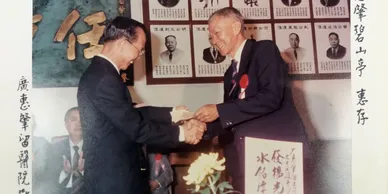
长期捐助广惠肇留医院。
Providing long term support for the Kwong Wai Shiu Hospital.
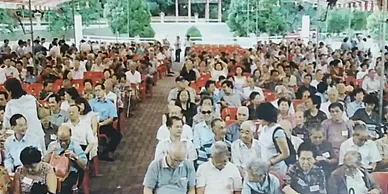
颁发常年奖学金与度岁金。
Giving out annual bursary and new year senior angbao.

参与全国性与区域性文化活动,支持学生的研究项目。
Participating in national and community cultural events, and sponsoring young people who are in search of their ancestral roots.

设立开放给公众参观研究的文物馆。
Establishing the Kwong Wai Siew Peck San Theng Heritage Gallery.
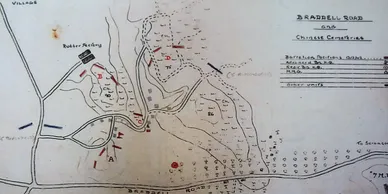
碧山亭坟山是汤申线的主战场之一。战事发生在1942年2月14日凌晨,也就是新加坡沦陷前一天。当时英军主要部署在碧山亭的西北部。
During the Battle of Singapore, 3 divisions from the Japanese 25th Army invaded from 3 principal routes and advanced towards the city along the Jurong, Bukit Timah and Thomson Line. Peck San Theng cemetery was one of the battlefields along Thomson Line and the fighting concluded within a day or two.
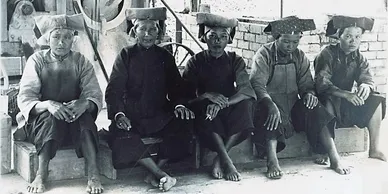
日本战机轰炸牛车水密集华人区,许多牛车水居民徒步前来碧山亭避难。其他地区的各籍贯人士亦全家人卷席逃到碧山亭坟场来寄宿。在豆腐街居住的三水妇女(红头巾)乘着一辆辆的罗厘车来到碧山亭落户,日治结束才陆续搬回市区。
Peck San Theng cemetery was perceived as a blessed place and a safe refuge by the Chinese community. When Japanese aircraft bombed Chinatown, many residents sought refuge at Peck San Theng cemetery. Families living in other districts, from various dialect groups, also moved to the cemetery at this time. The Samsui women who lived at Upper Chin Chew Street took lorry rides to Peck San Theng cemetery. They returned to the city when the Japanese Occupation ended on 15 August 1945.

日据时期,人民在艰苦中如常生活,表现出极大的勇气。Loh Weng Fatt 和Wong Ah Loi结婚时为“2604年”。2604年是日本天皇年,实为1944年。
During the Japanese Occupation, people tried to lead an ordinary life despite the hardships. Loh Weng Fatt and Wong Ah Loi registered their marriage in the year ‘2604’. The year is counted based on the Japanese imperial year system which, according to the Gregorian Calendar, should be 1944.
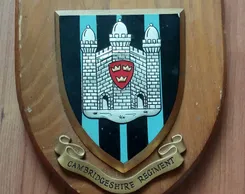
日军沿着布莱德路(Braddell Road)袭击,驻守在“90山头”(Hill 90)的第二剑桥郡步兵营(2nd Cambridgeshire Regiment)跟日军背水一战,双方伤亡惨重。
From 13 to 15 February 1942, the 2nd Battalion of the Cambridgeshire Regiment, 5th Royal Norfolk Regiment and 5th Bedfordshire and Hertfordshire Regiment were engaged in a battle with the Japanese Imperial Guard Division at Peck San Theng cemetery.
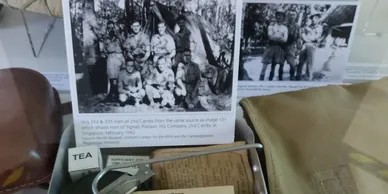
第二剑桥郡步兵营(2nd Cambridgeshire Regiment)军人的用品与纪念照。
Personal belongings for soldiers from the 2nd Cambridgeshire Regiment.
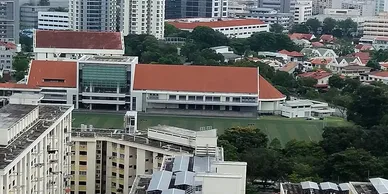
1942年2月15日,新加坡沦陷,易名为昭南岛(南方之光)。碧山亭为昔日的二战战场,90山头为RI 的所在地。
On 15 February, 1942, Singapore fell to the Japanese and was renamed Syonan-To (meaning ‘Light of the South’). Hill 90 was one of the battle fields in Peck San Theng. It is where Raffles Institution sit today.
